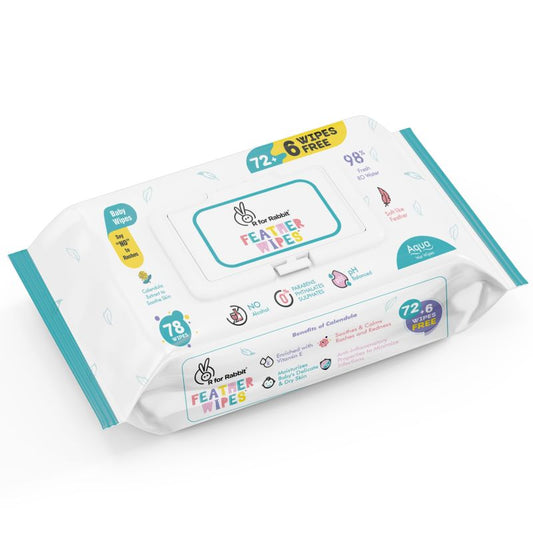Five Essential Things Babies Love In The Womb

During pregnancy, have you ever witnessed the jiggly move in your womb while satisfying a food craving or a slight movement upon listening to soft music?
Well, it is your tiny munchkin relishing the vibe! After all, who knows if the movement was just a happy dance!
Why Does It Happen?
According to research, the fetus is extremely sensitive to environmental stimuli, such as touch, light, and sound, which helps it experience its virtual sensory playground outside.
Although the reflex responses begin at the end of the first trimester due to the development of the nervous system, it is only in the second trimester that the response to external stimuli is felt by the expecting mother.
The bond between a mother and the baby initiates right from the very beginning of conception. However, with time, this bond forges into an unbreakable one with the action and reaction from both sides.
Hence, this implies placing the focus upon the things that the babies love in the womb during pregnancy. This supports their efficient brain development, besides preparing the baby for the outer world before actually coming outside!
Let us now understand that what makes a baby happy in the womb. This might assist you towards building a healthy interaction with your tiny tot before actually holding them in your hands for the very first time!
What Babies Like In The Womb?
Inside the womb, the babies are connected to their mothers in every way, shape, and form. Therefore, anything that a mother does, consumes, or feels is exactly mirrored by the baby.
Let us now discuss the various aspects of the things that the babies love inside the womb.
1. Mother's Voice: A Lifelong Connection
All of us must have noticed how an inconsolable baby calms down upon hearing their mother’s voice! This is because they find it the most adorable sensation due to its familiarity.
One of the reasons for this is that babies begin hearing at 25 weeks, and the first and the most recognized sound for them is their mother’s voice.
Also, according to studies, babies always tend to prioritize their mother’s voice due to its familiarity and calming nature.
Other reasons for the babies to love their mother’s voice are
- Helps in early bond formation, which is beneficial for future emotional development.
- Assists in brain development with the necessary sensory stimulation from different speech and rhythm. This is also responsible for their language development.
Tip: Mothers should always ensure optimum mood regulation for healthy fetal development.
Reason: Since the mother’s voice is reflected by the baby, it will always respond according to the mother’s mood. That is, the fetus will respond:
- Calmly, upon hearing Mother’s gentle voice.
- Anxiously, upon sensing Mother’s stress and fear.
Tip:
Consistent singing, reading, and talking to them while rubbing the belly calms and comforts them. Also, the repetition helps them recognize and start understanding their mother tongue even before being born.
2. Music and Rhythmic Sounds: The Gentle-Bonding Tunes
Music provides a soothing sensation, enabling good psychological development of the child.
Fact: Exposure to good music triggers the limbic system of the child’s brain, impacting their emotion and memory.
Now, since hearing develops in the second trimester, the fetus begins responding to external sounds. This, thereby, isn’t just reflective but also forms a part of their essential sensory and emotional development before even coming outside.
The reason for this is that the fetus already experiences the gurgling sound of digestion, the muffled breaths of the mother, and the lub-dub sound of the heartbeat and finds them soothing ever since their conception.
So, when the external sound reaches the womb, it is slightly muffled, but with the consistency, the fetus is capable of grasping the rhythm and beats. This further encourages their language, speech, and emotional development.
Also, studies show that the fetus is capable of remembering certain songs that they heard during pregnancy and responding to them after their birth. This is true because, according to an EEG study, the fetal brain shows an efficient response to rhythmic stimuli.
Benefits of exposure to music
- Helps in developing the auditory system, understanding different tones, frequencies, and patterns.
- Slows down the heartbeat and breathing, thus pacifying the baby.
3. Gentle Movements: The Womb Wiggle
The vestibular system of the fetus, responsible for balance and spatial orientation, begins to develop as early as seven weeks.
The fetus begins to sense the mother’s movements from around 16 weeks, which are reflected in the womb. Such rhythmic movements enable the baby to feel calm, triggered by the mother’s walking, stretching, etc.
This softness is due to the presence of the amniotic fluid that provides cushioning and a rocking sensation to the baby against the mother’s movements.
Mother’s motion stimulates the child’s inner ear, thus enabling the baby to experience its first gravity, motion, and orientation while floating in its amniotic fluid savior!
Benefits
1. Mother’s movements enable the fetus’s sleep and wake cycle.
Reason: When the mother is in a calm state, the fetus is quite active because it wakes up. On the other hand, if the mother is active, the soft, rocking, rhythmic movements lull the baby to sleep, thus making it calmer.
This also becomes the reason why the child sleeps during the day and wakes up wide awake during the night, besides loving being rocked to sleep after birth.
2. Mothers’ regular sleep-wake cycle helps in the kids’ early development of the circadian system, thus habituating them to the routine. Also, some studies show that the fetus shows the REM sleep pattern in their third trimester, which is associated with dreaming.
Tips to Enhance Fetal Comfort
- Regular gentle walks support optimum blood circulation, thus promoting fetal relaxation.
- The rhythmic movements promote essential bonding between the mother and the baby.
- The swift stretching and breathing exercises trigger relaxation and ease stress.
Caution: Avoid sudden movements to prevent the startle reflex in the baby!
4. Flavors from Maternal Diet: The Belly Buffet
Among the discussions of what a baby likes in the womb, the maternal diet is one of the leading factors! This is because of the pregnancy hormones and various sensory developments.
How does it happen?
As soon as the mother consumes something, its digestion is followed by its absorption into the bloodstream. The food is transferred to the baby through the bloodstream and is absorbed into the amniotic fluid.
The fetus begins swallowing the amniotic fluid regularly by 16 weeks and extensively by 20 weeks. This womb habit becomes one of the major milestones for the baby’s taste palate development.
Since the amniotic fluid surrounds the nasal passage of the fetus, children can both taste and smell their mother’s diet. This also forms one of the major reasons for children’s familiarity and soothing sensation during breastmilk feeding sessions.
Benefits
- Exposure to different flavors before birth triggers their acceptance after birth.
- The higher the exposure to different foods, the healthier their eating habits.
- Including a variety of diets during pregnancy also helps in the baby’s metabolic responses to certain diseases like obesity, diabetes, anorexia, etc.
Tips to enhance baby’s eating habits
- Include a nutrition-rich meal in the diet consisting of various veggies and fruits.
- Avoid processed foods and excessive sugar, as they can affect children’s dietary choices.
- Stay hydrated for efficient amniotic fluid functionality.
Tip: The more the variety of the maternal diet, the more intense the fetal absorption from the amniotic fluid, and the larger the fetal exposure to certain diets.
5. Light Exposure: The Radiant Ripples
The light has the potential to seep right into the womb, especially natural light like the sun, which can even be sensed by the fetus with closed eyes during the third trimester.
The retinal photoreceptors begin to develop around 26 to 28 weeks. This enables the fetus’s response to the strong light with their head movements, squinting, or increased physical activity.
Why does it happen?
The body’s circadian rhythm is responsible for the regulation of the internal biological clock, which affects the sleep-wake cycle, body temperature regulation, hormonal fluctuation, and metabolism.
The secretion of melatonin promotes sleep, and the natural internal functioning of this enables the baby to understand the 24-hour cycle. This further enables the baby to get habituated to the sleep-wake cycle before even being born.
Post-Birth Benefits
- Children naturally understand the day-night routine, enabling a good sleeping cycle.
- Adaptable to light-based cues. That is, children begin understanding the difference between night and day and start linking it naturally with the mother’s movement.
- Less fussy and more responsive.
Further, it is also believed that the light stimulation is responsible for the development of the optic nerve, visual cortex, and reflexes in the later stages of pregnancy.
Tips to enhance the light exposure
- Make sure to get the morning sunlight for at least 20 minutes every day.
- Avoid exposure to bright or artificial lights for longer periods to avoid disruption of the natural melatonin production.
- Promote a dimly lit room for an enhanced sleep cycle.
Caution: Avoid overstimulating the baby with various artificial light sources, flashlights, etc., as it hinders the natural sleep-wake cycle of the baby.
This light exposure, when inside the womb, is also responsible for their attraction towards the bright light after birth!
Conclusion
Fetal development is an essential component to ensure a healthy life for the baby. This is because their nine-month period inside the womb prepares them for the outer world with the necessary sensory experiences and development at every stage.
Therefore, before asking what makes a baby happy in the womb, it is equally important to be mindful about what you want your baby to love when in the womb.
Your actions will, in turn, affect their development, which could further assist you in making the necessary choices to keep your baby healthy, wealthy, and bright!
Also Read:
- How Climate Change Affects Your Pregnancy Journey
- How to be Active in Pregnancy and Modify Workouts Safely?
- How to Improve Haemoglobin Naturally During Pregnancy
- Top 10 Fiber-Rich Foods to Relieve Constipation During Pregnancy
- 4 Essential Baby Care Tips for Indian Parents [Must-Know]











